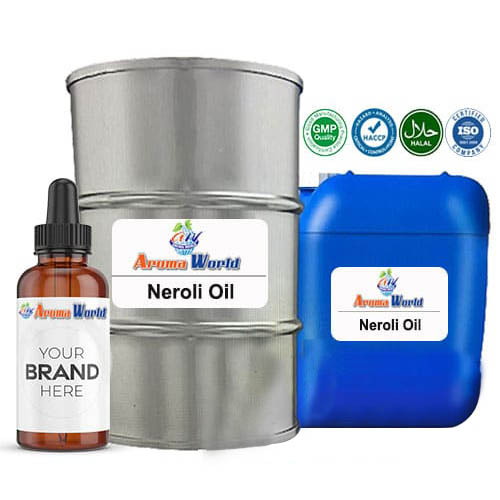| Refractive Index |
1.4730 To 1.4780 ( 1.4750) |
| Chemical Components |
The main chemical components of neroli oil are a-pinene, camphene,
b-pinene, a-terpinene, nerol, neryl acetate, farnesol, linalool,
Nerolidol, linalyl acetate, methyl anthranilate and indole.
|
| Description & extraction |
It is also known as 'orange blossom' and it takes about 1000 lbs. Of
orange blossoms to make 1 lb. of neroli oil. The name is said to have
originated from the Italian princess, anne-marie de la tremoille
(Countess of Nerola) who used the oil as a perfume and to scent her
bathwater and gloves. It is still an ingredient for making traditional
smelling eau-de-cologne. Orange petals are often associated with
marriage, purity and brides, as brides traditionally wore orange buds in
their hair. Neroli oil is extracted from the flowers of Citrus aurantium
var. amara (also known as Citrus vulgaris and C. Bigardia) of the
Rutaceae family and is also known as orange flower and Neroli
bigarade. Neroli oil is extracted from the small, white, waxy flowers of
The bitter-orange tree by steam distillation and yields 0.8 - 1 %. |
| Toxicological Properties |
Neroli oil are antidepressant, antiseptic, anti-infectious, antispasmodic, bactericidal, carminative, cicatrisant, cytophylactic,
cordial, deodorant, digestive, emollient and tonic. Neroli Oil
is not only has great therapeutic properties, but also has the most
incredible smell. It has a greatly relaxing effect on the body and mind,
relieving muscle spasms, calming heart palpitations and has a
wonderful rejuvenating and regenerative effect on the skin, helping to
Prevent ugly scarring and fighting stretch marks. |

